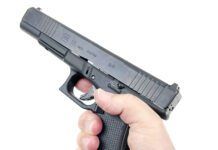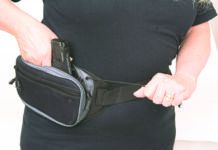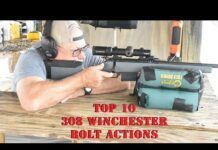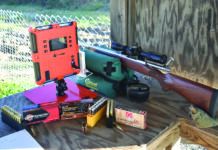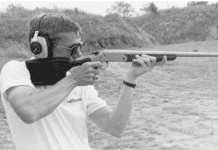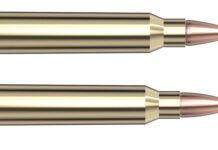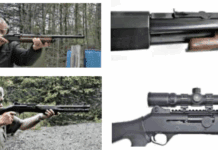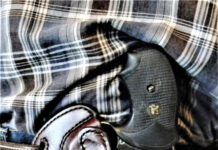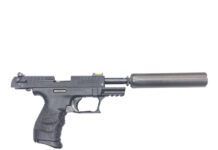Which States Offer Reciprocity?
I am a long-time subscriber, and I have a question. Could you advise me how many states at the present time have a “must-issue CCW” policy? My state (Florida) presently has reciprocity with 35 states, and I want to push my legislators for more, so that answer is a vital piece of information.
—Lawrence Jon Barden,
CPPO, C.P.M.
The website www.HandgunLaw.us is owned by Steve Aikens and Gary Slider. They say, “We are a Database of Information on Carrying Firearms legally for Self-Defense. That is all we will try to be. We recognize there are so many variances in our state-to-state laws, the average individual may have difficulty keeping up with those laws well enough to prevent them from breaking the law, especially as they travel.” Check them out. ~Todd Woodard
How About Japanese Bolt Actions?
I’ve been a Gun Tests subscriber for years now and have always enjoyed the magazine. Your recent articles dealing with older guns have been a welcome addition—especially the articles that test old military firearms.
If I may, I’d like to suggest that you test the bolt-action military rifles of Japan. These rifles have suffered a bad reputation since WWII, mainly because many U.S. servicemen brought back late-war “last-ditch” rifles, which were certainly ugly, and reputed to be dangerous to shoot. However, shortly after the war, P.O. Ackley found the Japanese action to be the strongest of all WWII military bolt-action rifles. In my experience, pre-war and early-war rifles are very well made and accurate.
I’d very much like to read your assessment.
—John Knight,
Calhan, CO
Re: “Aluminum, Polymer, and Steel
45 ACP Semiautos Square Off” July 2011
I just received my July issue and read the article, “Aluminum, Polymer, and Steel 45 ACP Semiautos Square Off.” For the uninformed, the reviewer has unfairly evaluated the Glock 36.
He mentions the G36 magazine is thicker than that for the 1911. What is probably more important for personal defense is the pistol width. The max width of the Glock itself is nearly a half-inch less than that of the Colt.
He expressed “caution” for the unsupported chamber in the Glock barrel, as it is a concern, stating that “+P loads should be used sparingly.” This is downright misleading. Documented personal experience and online forum comments from actual Glock owners would summarily refute such a ridiculous assertion.
But the best was saved for last in his discussion on holstering the pistol. “If you have your finger in the trigger guard and you snag on the holster—bang. Our primary rater, a man with great police experience…” This type of firearms handling violates a cardinal rule for gun safety: Don’t put your finger on the trigger until you’re ready to shoot. My hope is that this “man with great police experience” does not patrol in my neighborhood. I’d hate to get accidently shot by an officer not following standard gun safety.
His later comment on the Glock trigger safety indicates suspicion that the Glock could fire under “momentum” of the trigger. This clearly indicates a lack of understanding for the firing mechanism inside the frame.
I do believe the Colt is an excellent pistol. However it costs nearly twice as much, is wider, needs a rubber aftermarket grip to increase control, and weighs slightly more. I think an A- would have been more representative of the rater’s criticism for the Glock, but then again, I think he is a 1911 owner. Thanks.
—Kevin Buchan,
Sacramento, CA
Re “Smallbore Accuracy Shootout: CZ,
Browning, Anschtz Duel,” July 2011
My comment has to do with your July article comparing the .22 Anschtz 64 MP R, the CZ 452 Silhouette, and the Browning T-bolt.
The caption for the picture on page 13 says that you don’t like to close the bolt and leave the action cocked. I believe that your concern here is not to dry fire the rifle nor to leave the action cocked all the time in storage.
I have heard that some rifles cock on closing the action or moving the handle down. I have an older Remington Model 510 single-shot bolt action and a new Savage Mark II BTVS bolt action. Both of these rifles cock the action upon lifting the bolt handle up. If the rifles that you evaluated cock the same way, then even though you remove the bolt, it is still cocked. Both of my rifles let me lift the bolt and take the safety off. Then, while holding the bolt up, pull the trigger and slowly let the bolt down, uncocking the gun without dry firing it.
The other option that solves both the dry firing and leaving the action cocked is to fire the gun using 22 LR snap caps as I do with my semiauto pistols and rifles.
Great comparison on these rifles.
—Warren,
Perkasie, PA
The only thing I don’t like about your shootout is that you can get a Ruger 10/22 for a song and a dance, and then have a new barrel, trigger, and stock added for not much more. There’s an entire industry dedicated to modifying the 10/22 that makes the gun accurate and attractive. I’ve got an MOA Ruger 22 LR that cost less than most of your guns in the review with a bull barrel, custom stock, and trigger job. I also have a sub-MOA Ruger 10/22 magnum with a carbon barrel, fancy stock, trigger job, and other nifty add-ons for less than the Anschtz you list.
It’s just hard to believe you list a $1,400 rifle and don’t include something from www.Volquartzen.com or 1022RaceRifle.com.
—John G.
via email
Re: Firing Line “Inexpensive Ammunition,”
July 2011
Per reader Jim Stoba’s request for reviews of inexpensive ammunition, I would hope he is looking only for plinking or target ammo. I will likely not buy any Wolf-brand ammo for any purposes when my current stocks are gone, due to poor quality. In batches of 380 ACP, 9mm and 223 Rem. I have had failures to fire as well as bullets jammed in bores because of partial ignition. These failures were caused by primers that did not ignite and/or powders contaminated with oil. For any situation involving my personal safety, I will only use premium ammunition from top manufacturers or my own handloads. It would be interesting to see what qualifications and caveats Gun Tests would apply should it even consider making the effort to delve into testing “inexpensive” ammunition.
—Stephen Clark,
via email
New Subscriber and Former Federal LEO
Likes What He Sees
I am a recently retired federal law enforcement officer who spent a number of years as a field armorer (a collateral duty to my other duties), and I have had personal and professional interest in firearms and shooting sports since a very young age.
I have always liked reading firearms magazines. However, my chief complaint is that it seems to me that the major magazines cater to the firearms manufacturers, and tend to stretch the truth about the products that they “test” and “review.”
I just got my first issue of Gun Tests, and I must say that (so far) I am very happy with your magazine, and the way it provides interesting historical background and reviews from educated reviewers that do not hold back their true opinion and results of tests.
Your article on the HK USP with the LEM Module was quite informative. It provided me with the type of information that I was seeking, and helps make me a more informed consumer.
I also enjoyed your article on the Kahr CM9—I own a Kahr MK9 2003 Elite, which wears aftermarket checkered wood grips and was worked over by Robar. It is such a smooth, sweet shooter that I often carry it over other higher-capacity or bigger-caliber pistols.
The MK9 2003 Elite pushed me to purchase a Kahr PM45, which is a very surprising pistol. I left it stock, and expected the recoil to slow down my shot-to-shot times, and I doubted that I would ever shoot it for fun. The PM45, even with the 45 ACP and the polymer construction, is a puppy dog to shoot. I love to see the surprise in people’s eyes when they unload a full mag of DoubleTap +P ammo, and the gun does not bite or buck.
When it comes to small and micro carry/backup pistols, I once owned a Rohrbaugh 9mm—the R9S, I believe—when they first came on the market. While it is a masterpiece of tolerance and beautiful machining, it consistently took large bites out of the web of my shooting hand. It was always “a bleeder,” and it kicked and bucked like my Ruger Alaskan with hot 454 Casull loads.
I had a similar experience with the somewhat new Seecamp 380 ACP. It is small, solidly built, and while it does not take chunks of flesh when I shoot it, it is violent in recoil, and the triggerguard will always take a good whack at my trigger finger. I figured that this was purely a result of the 380’s small size, until I bought my wife a new Taurus TCP 380 (stainless slide, pink polymer frame, made in the USA). The TCP is likely half the weight of the 380 Seecamp, and less than half the retail cost of the Seecamp 380. I took the Taurus to the range to test it, and I was floored to find out that the Taurus TCP is a soft-shooting, accurate pistol. Its sights (if you can even call them that) are milled into the slide and appear to be for nothing more than for show. However, when I lined up the tiny front “bump” sight with the rear, it was dead on at 10 meters, hitting a plate-sized gong with every shot. I put the hottest and mildest ammo I could find through it and failed to have any sort of FTF or FTE, etc.
It just goes to show you that a lot of those typical assumptions about construction, brands, weight, etc. can go right out the window. If I had to shoot for an extended period, I would have to set my pride aside and pick up my wife’s pink-and-stainless TCP.
Unlike most civilians, I have had the luck during my career in federal law enforcement to fire, disassemble, reassemble, and modify all sorts of firearms—from 22 Short to M-2 50 BMG, and M-79 and RPGs. Perhaps you can’t really call the M-79 and RPGs firearms. But the M-79 does have a break-barrel, stock, trigger, and sights, so it meets some of the criteria, in my book.
I love a good 357 or 45 LC revolver, the Lego-like simplicity of Glocks, especially in 357 SIG and 10mm, a quality pump shotgun, the utilitarian functionality of a quality AK, and the tremendous range of the .338 Lapua. I did just get the new RRA 5.56 piston-driven AR style pistol. The recoil is as light as an M4 carbine, and it is short and maneuverable in tight quarters.
So keep up the good work! I learned quite a bit from my first issue of Gun Tests.
—Leo,
via email
Thanks for the kind words and a great letter. ~TW
Re “Paired Foreign 40 S&W Pistols: H&K USP
LEMs Duel Steyrs,” June 2011
In the tests of HK USP40 and Steyr M-A1 pistols in the June 2011 issue, the Steyr got a B+ (vs. an ‘A’ for the HK). The comment was, “We would rate the (Steyr) MA-1 higher with the addition of target sights.”
Steyr says they did extensive tests of many combinations of sights for their pistol and found that the “trapezoidal” sights on production guns were better than any others for fast acquisition of the target and getting off the quickest first shot. Of course, both the HK and the Steyr guns are primarily designed for gunfights. Neither one would be a first choice for target work. They are both “tactical” designs. The testers did rapid-fire action tests at 7 yards with both guns and recorded first-shot elapsed time and total time for three fast shots. How did it turn out? For the HK, the best time to first shot (after a little practice) was .98 seconds, with the compact HK “slightly better.” The best time for all three shots was 1.64 seconds with the HK compact.
For the Steyr, “first shots… in less than .80 seconds became the norm” (after a little practice). Three-shot runs were done in 1.32 and 1.37 seconds. These results seem to confirm Steyr’s own tests. Their pistol is about 20% faster than the HK on the first shot, and delivers three shots on target in 20% less time than it took with the HK’s best run.
But the testers are not confused with facts; they know what they like. They conclude: “Regardless of the faster elapsed times at close range, our staff would change out the sights on both (Steyr) guns to just about anything plainer and simpler.” Hmmm. That ripping sound you hear is the Steyr engineers tearing out their hair.
—H. du Coudray,
Searching Archives
I was searching your archives for a S&W Sigma 40 S&W, and the only way I could try to find this small semiauto was to look at each month. This is a very slow method, and I could not find this firearm. I would like to suggest that you create a searchable database. Have you tested this firearm?
—Edward Fuller
The easiest way to find a gun in the archives at www.Gun-Tests.com is to put a distinctive term in the search window. I put in “Sigma” and got two returns. We tested a S&W Enhanced Sigma 40VE, $602, in the November 1999 issue. From the review: “Don’t buy. Now that Smith & Wesson has gotten the short-stroke trigger to be smooth and predictable, perhaps the company should upgrade the gun that surrounds it. In our opinion, Smith & Wesson can and should do better if the company intends to maintain this pistol product line.” ~TW


